
An oath of office is an oath or affirmation a person takes before assuming the duties of an office, usually a position in government or within a religious body, although such oaths are sometimes required of officers of other organizations. Such oaths are often required by the laws of the state, religious body, or other organization before the person may actually exercise the powers of the office or organization. It may be administered at an inauguration, coronation, enthronement, or other ceremony connected with the taking up of office itself, or it may be administered privately. In some cases it may be administered privately and then repeated during a public ceremony.
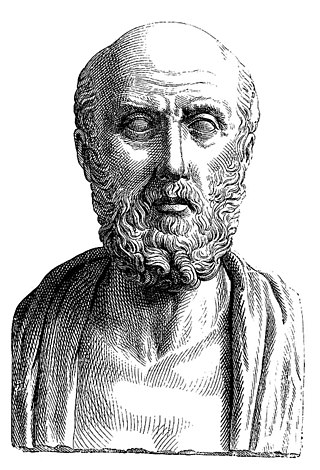
The Hippocratic Oath is an oath of ethics historically taken by physicians. It is one of the most widely known of Greek medical texts. In its original form, it requires a new physician to swear, by a number of healing gods, to uphold specific ethical standards. The oath is the earliest expression of medical ethics in the Western world, establishing several principles of medical ethics which remain of paramount significance today. These include the principles of medical confidentiality and non-maleficence. As the seminal articulation of certain principles that continue to guide and inform medical practice, the ancient text is of more than historic and symbolic value. It is enshrined in the legal statutes of various jurisdictions, such that violations of the oath may carry criminal or other liability beyond the oath's symbolic nature.
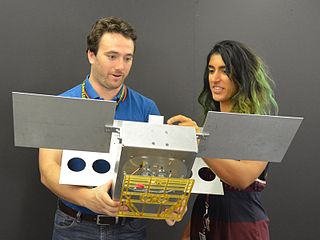
Engineers, as practitioners of engineering, are professionals who invent, design, analyze, build and test machines, complex systems, structures, gadgets and materials to fulfill functional objectives and requirements while considering the limitations imposed by practicality, regulation, safety and cost. The word engineer is derived from the Latin words ingeniare and ingenium ("cleverness"). The foundational qualifications of a licensed professional engineer typically include a four-year bachelor's degree in an engineering discipline, or in some jurisdictions, a master's degree in an engineering discipline plus four to six years of peer-reviewed professional practice and passage of engineering board examinations.

An engagement or betrothal is the period of time between the declaration of acceptance of a marriage proposal and the marriage itself. During this period, a couple is said to be fiancés, betrothed,intended, affianced, engaged to be married, or simply engaged. Future brides and grooms may be called fiancée (feminine) or fiancé (masculine), the betrothed, a wife-to-be or husband-to-be, respectively. The duration of the courtship varies vastly, and is largely dependent on cultural norms or upon the agreement of the parties involved.
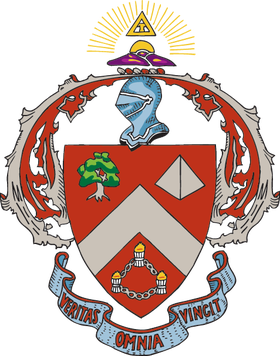
Triangle is a fraternity for male students majoring in engineering, architecture, and the physical, mathematical, biological, and computer sciences. It is the only member of the North American Interfraternity Conference to limit its membership recruitment to these majors.

The Iron Ring is a ring worn by many Canadian-trained engineers, as a symbol and reminder of the obligations and ethics associated with their profession. The ring is presented to engineering graduates in a private ceremony known as the Ritual of the Calling of an Engineer. The concept of the ritual and the rings originated from H. E. T. Haultain in 1922, with assistance from Rudyard Kipling, who crafted the ritual at Haultain's request.
The Ritual of the Calling of an Engineer is a private ritual, authored by Rudyard Kipling, in which students about to graduate from an engineering program at a university in Canada are permitted to participate. Participation may also be permitted for Canadian professional engineers and registered engineers-in-training who received training elsewhere. The ritual is administered by a body called The Corporation of the Seven Wardens. As part of the ritual each participant is conferred the Iron Ring.

The Canadian Oath of Allegiance is a promise or declaration of fealty to the Canadian monarch—as personification of the Canadian state and its authority, rather than as an individual person—taken, along with other specific oaths of office, by new occupants of various federal and provincial government offices; members of federal, provincial, and municipal police forces; members of the Canadian Armed Forces; and, in some provinces, all lawyers upon admission to the bar. The Oath of Allegiance also makes up the first portion of the Oath of Citizenship, the taking of which is a requirement of obtaining Canadian nationality.
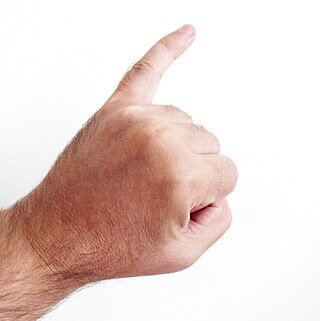
The little finger, or pinkie, also known as the baby finger, Forth Finger, fifth digit, or pinky finger, is the most ulnar and smallest digit of the human hand, and next to the ring finger.
An oath of citizenship is an oath taken by immigrants that officially naturalizes immigrants into citizens. It is often the final step in this process, and is usually done in a ceremonial capacity. An oath of citizenship is designed to be a statement of patriotism and loyalty to the new country. In countries which retain a monarchical system of government, an oath of allegiance to the monarch is often required as well. Adding an oath to God to the end of an oath is usually optional.
Investiture is a formal installation or ceremony that a person undergoes, often related to membership in Christian religious institutes as well as Christian knighthoods or damehoods, in addition to government offices.
A Hindu wedding, also known as Vivaha, Marathi: Lagna (लग्न), Bengali: Bibaho (বিবাহ) Kalyanam or Pelli is the traditional wedding ceremony for Hindus. The wedding ceremonies are very colourful, and celebrations may extend for several days. The bride's and groom's home—entrance, doors, wall, floor, roof—are sometimes decorated with colors, flowers, and other decorations.
The Veterinarian's Oath was adopted by the American Veterinary Medical Association's House of Delegates July 1969, and amended by the AVMA Executive Board, November 1999 and December 2010.
Being admitted to the profession of veterinary medicine, I solemnly swear to use my scientific knowledge and skills for the benefit of society through the protection of animal health and welfare, the prevention and relief of animal suffering, the conservation of animal resources, the promotion of public health, and the advancement of medical knowledge.
I will practice my profession conscientiously, with dignity, and in keeping with the principles of veterinary medical ethics. I accept as a lifelong obligation the continual improvement of my professional knowledge and competence.
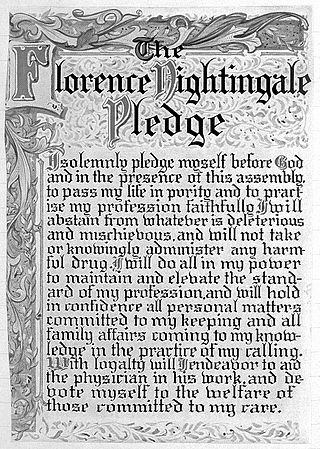
The Nightingale Pledge, named in honour of Florence Nightingale, is a modified version of the Hippocratic Oath. Lystra Gretter and a Committee for the Farrand Training School Grace for Nurses in Detroit, Michigan created the pledge in 1893. Gretter, inspired by the work of Nightingale, the founder of modern nursing, credited the pledge to the work of her committee, but was herself considered "the moving spirit behind the idea" for the pledge.
Engineering traditions in Canada are diverse. Many of the traditions are practised at the engineering departments of Canadian universities, where student organisations continue to practise traditions started by other engineers in previous years.
Engineering ethics is the field of system of moral principles that apply to the practice of engineering. The field examines and sets the obligations by engineers to society, to their clients, and to the profession. As a scholarly discipline, it is closely related to subjects such as the philosophy of science, the philosophy of engineering, and the ethics of technology.
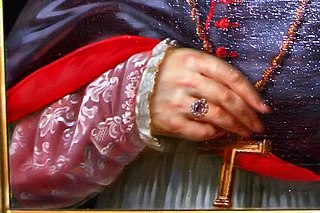
An ecclesiastical ring is a finger ring worn by clergy, such as a bishop's ring.

The Engineer's Ring is a ring worn by members of the United States Order of the Engineer, a fellowship of engineers who must be a certified Professional Engineer or graduated from an accredited engineering program. The ring is usually a stainless steel band worn on the little finger of the dominant hand. This is so that it makes contact with all work done by the engineer. Rings used to be cast in iron in the most unattractive and simple form to show the nature of work. The ring is symbolic of the oath taken by the wearer, and symbolizes the unity of the profession in its goal of benefitting mankind. The stainless steel from which the ring is made depicts the strength of the profession.

A pinky ring is any ring worn on the pinky, or little finger, of either hand. A pinky ring may have special significance conferred by the wearer's office or professional association, but may also may be worn purely for fashion. Signet rings, which hold their own meaning, are often worn on the pinky.
The Osteopathic Oath is an oath commonly administered to osteopathic physicians who practice osteopathic medicine in the United States. Similar to the Hippocratic Oath, it is a statement of professional values and ethics. The first version of the oath was created in 1938, and the current version of the oath has been in use since 1954. Although taking the oath is not required or legally binding, it is commonly seen as a rite of passage.














